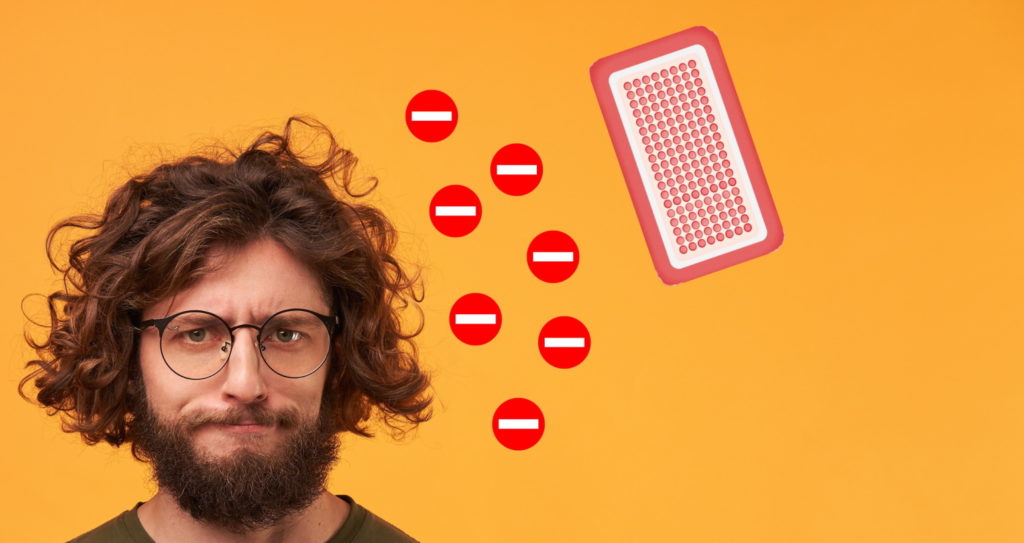Infrared radiation can penetrate the different tissues of the skull
In transcranial photobiomodulation therapy, the goal is to illuminate the brain with specific infrared radiation. Your Photobiomodulation device does not directly access the brain, so the radiation must pass through the different human tissues before it can reach the brain.
Thus, only a tiny percentage of this radiation will reach its destination… the rest will be lost! Some of it will either be absorbed by the skin and transformed into heat or reflected or refracted.
Nevertheless, the few small percentages that reach the brain will be enough to stimulate your cells’ activity.
However, there is one thing that the infrared radiation will not be able to pass through: the hair!

Infrared radiation blocked by the hair
Indeed, in a very interesting study, Theodore and Larry put their finger on an aberration: most marketing departments of manufacturers of Photobiomodulation devices publish photos of patients having placed a device on their hair.
Yet, the two researchers demonstrate that hair is a barrier to penetrating infrared light into the brain. They illustrate this with a very telling example. They place a 2mm thick layer of blond hair between an infrared laser and a laser sensor. Result: 98% of the laser power is absorbed or reflected by the 2mm of hair! This deprives the brain of infrared radiation!
Other researchers working on Photobiomodulation agree. For example, in this study, it is possible to read:
Irradiation sites have been chosen in various parts of the head, but the forehead has been most often used due to the lack of hair which can serve as a formidable barrier to light penetration depending on its color and density.
The same goes for Professor Michael Hamblin, who has hundreds of scientific publications on Photobiomodulation to his credit:
In this transcranial PBM (tPBM) application, near-infrared (NIR) light is often applied to the forehead because of the better penetration (no hair, longer wavelength)
Michael Hamblin, source
Conclusion: Given the studies cited above, and in the absence of studies that will prove otherwise, hair is an obstacle to transcranial Photobiomodulation. Patients who wish to illuminate their skull will first have to shave their hair (at least the illuminated areas) or choose clearer areas (such as the forehead).
Want more tips? Think about the newsletter (no spam, no commercial)
